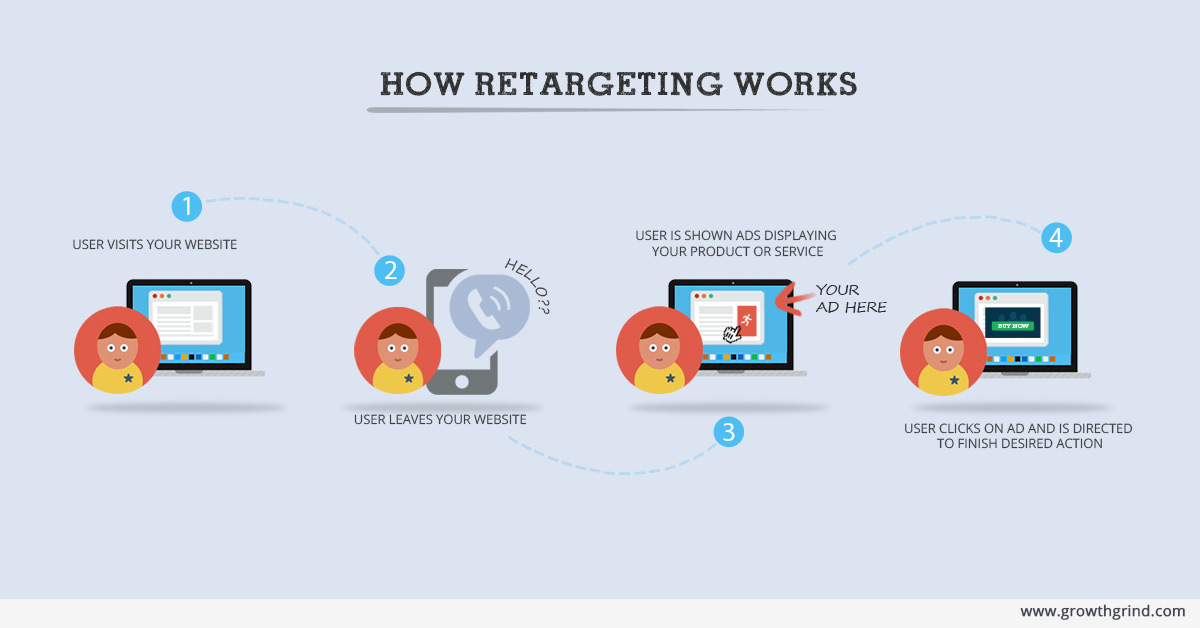Like other businesses, law firms focus much of their online advertising efforts on inbound website traffic and bringing in new visitors or leads. Many of these people arrive at your site because they have a genuine interest or need for your service.
But what happens if they visit your site and like what they see, but then they leave — either because they get distracted, need to use their device for another purpose, or begin to research competing law firms?
For a long time, these lost leads represented one of the biggest challenges to law firms fighting to grow their business online. But in recent years, new practices and technologies have made it possible to “re-recruit” these people, recapturing the leads that got away.
In particular, retargeting and remarketing are effective means of reminding people that they found your firm (and encouraging them to return).
But the practice of retargeting for personal injury attorneys comes with special challenges — so much so that some lawyers assume it isn’t possible or worthwhile.
Below, we explain how personal injury retargeting is not only permissible but also effective and extremely valuable for personal injury law firms looking to compete in a crowded web space.
What Is Personal Injury Retargeting?
Retargeting means displaying banners (or other advertising messages) on third-party websites to users who have already shown interest in your product or service.
It’s accomplished through the use of cookies — not the kind that go over so well on Sesame Street, but the very small text files that websites store on user’s computers through internet browsers like Firefox, Safari, and Chrome. These cookies allow websites and browsers to recognize the user and their preferences as they move around the web.
With retargeting, when visitors leave your site and visit another, the ad blocks on that third-party website will look for cookies to decide which ads they should display. Personal injury retargeting allows your firm to appear in those spaces, but only for users who’ve already shown an interest in you.
Because you’re narrowly targeting a relevant demographic already familiar with your brand, retargeting is an especially cost-effective means of online advertising for attorneys.
Using third-party sites and services to advertise your firm directly to the people most likely to hire you? What’s better than that? You can understand, then, retargeting’s appeal to lawyer.
But is it even allowed? Let’s explore.
The Difference Between Retargeting and Remarketing
Before diving in any further, we want to quickly clarify the distinction between retargeting and remarketing. The two terms are often used interchangeably. Technically, though, “remarketing” refers specifically to the use of email to recapture lost customers.
If you’ve ever added an item to your Amazon shopping cart but then closed the window without making a purchase, you probably got an email later that week reminding you your cart isn’t empty. That’s remarketing in a nutshell.
Some companies and even attorney advertising agencies use these terms more loosely, so it’s helpful to make sure you’re always on the same page. In this article, we focus primarily on retargeting.
The Problem with Personal Injury Retargeting and Google
Many companies use Google’s services to carry out their retargeting efforts. But generally speaking, that’s a no-go for attorneys in the PI market. Why?
Google is concerned about exploiting “the difficulties or struggles of users” in “categories related to personal hardships.” Their definition of hardships includes a wide array of injuries and other health conditions, meaning most PI and/or mass tort firms are ineligible.
(Because criminal charges also qualify as “personal hardships,” criminal defense firms can’t retarget through Google either.)
Given that Google is a leading retargeting and remarketing provider, attorneys sometimes assume it’s the only such provider, or at least the only one worth bothering with. That’s a misconception.
Personal Injury Retargeting Is Possible: Effective Avenues Outside Google
While Google’s Display Network is large, there are many other Demand-Side Platforms (DSPs) outside the Google Network that allow advertisers to purchase display inventory as well.
In other words, while Google may not allow PI lawyers to retarget (or even to serve ads of any kind, depending on their area of practice), there are other vendors who will.
At the end of the day, the user doesn’t know which service you used to retarget your ads. In fact, they’re generally unaware that you’re retargeting at all. So whether you go through Google isn’t important (nor is it even an option for PI practices). Rather, what matters is:
- Cost-effectiveness
- Your ability to reach users who showed interest in your firm but didn’t take action the first time
- Compliance with ethics rules and DSP terms of use
- Return on investment (i.e. your ability to grow your firm)
- Outpacing your competitors without blowing your budget
All of these things can be accomplished through digital marketing services whose rules are not as PI-adverse as Google’s.
The Benefits of Personal Injury Retargeting
Retargeting is a great approach for gaining more digital conversions. Not only does it keep you “top of mind” but it also helps to redirect the user back to your website for conversion.
Ultimately, retargeting can be successful in leading users to fill out a contact form or call your firm directly. These are prospective clients who might otherwise contact a competitor because they left your website and then found theirs.
Retargeting is relatively inexpensive, as it is based on the number of website visitors your firm gets each month. The more website sessions you have, the higher the number of people who will be served the retargeted ads.
Let Network Affiliates help you retarget your leads and increase web conversions. Remember: on average, only 3% of users convert their first time on a website! There’s no reason you can’t capture more of the remaining 97% by bringing the back for a second.
(Featured image courtesy of Growthgrind.com)

